How to Teach Colors and Shapes to Pre-K: A Fun and Engaging Guide for Parents and Teachers
Welcome to the magical world of colors and shapes! Teaching these basic concepts to Pre-K students can be an exciting adventure filled with creativity and laughter. This blog will guide you through the process of introducing colors and shapes to young learners in a fun and engaging way. Whether you're a parent or a teacher, you’ll find plenty of tips, tricks, and hands-on activities to make learning enjoyable for your little ones.
Why Teach Colors and Shapes?
Understanding colors and shapes is a fundamental part of early childhood education. These concepts are essential not just for academics but also for helping children explore and make sense of the world around them.
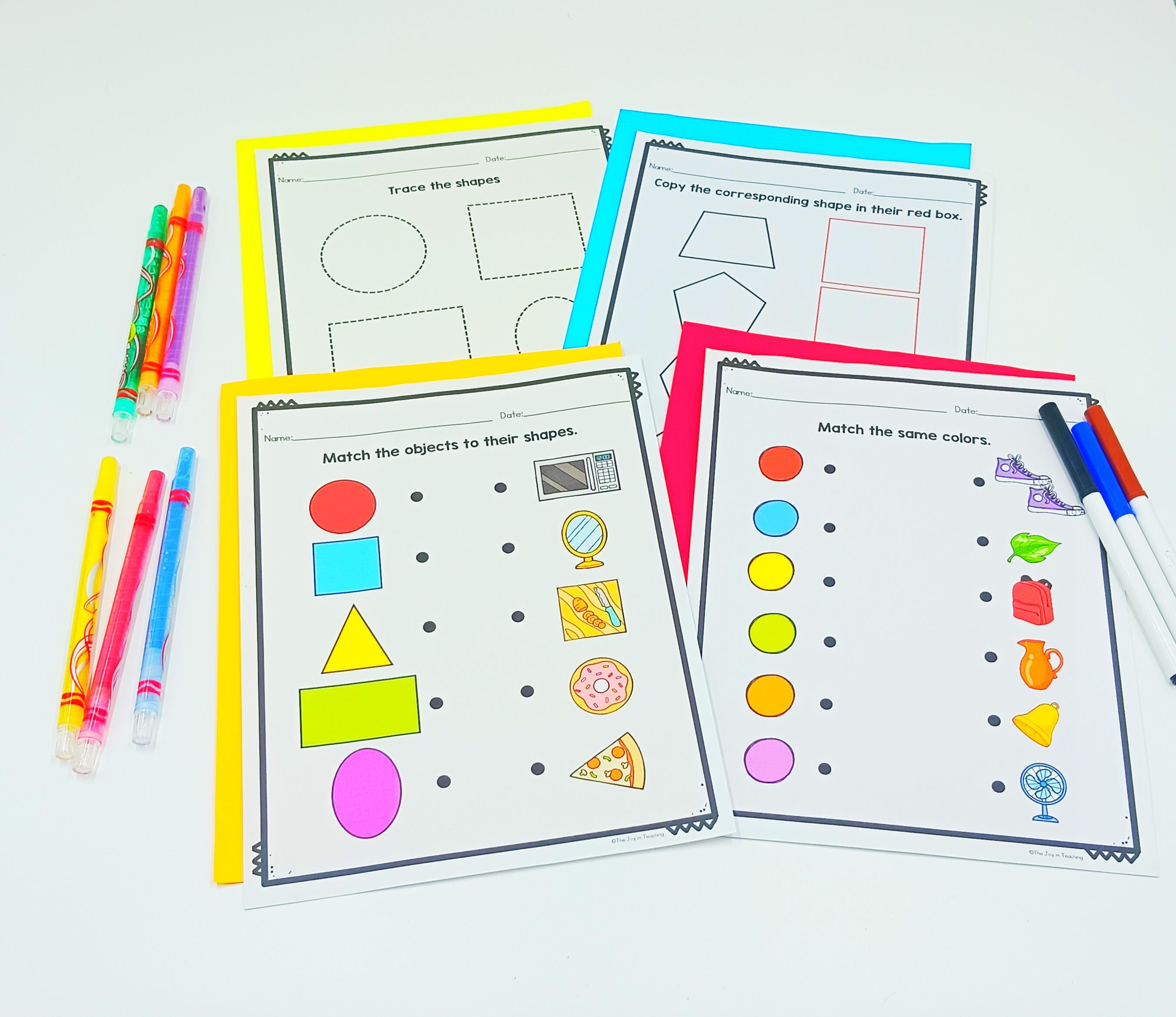

Here's why they matter:
- Foundation for Math and Reading – Recognizing shapes prepares children to identify letters and numbers.
- Cognitive Development – Sorting and categorizing by color and shape improves memory and problem-solving skills.
- Creativity and Expression – Exploring colors and shapes encourages artistic expression.
- Language and Communication – Describing objects by their color and shape builds vocabulary and communication skills.
Step-by-Step Guide to Teaching Colors and Shapes
Step 1: Introduce Basic Colors
Start with the three primary colors: red, yellow, and blue and move in with secondary colors: green, violet, orange. Use visual aids and everyday objects to help children make connections.
Activities:
- Color Hunt: Let children search for red, yellow, or blue items around the house or classroom.
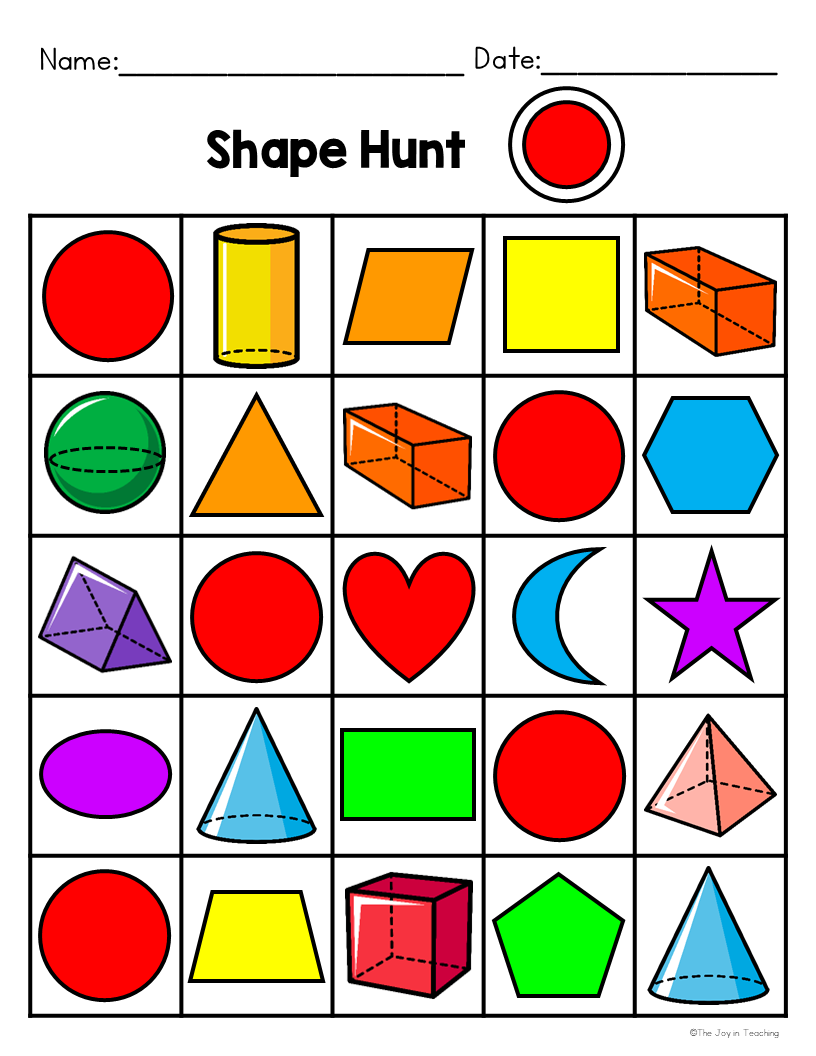
- Color Chart
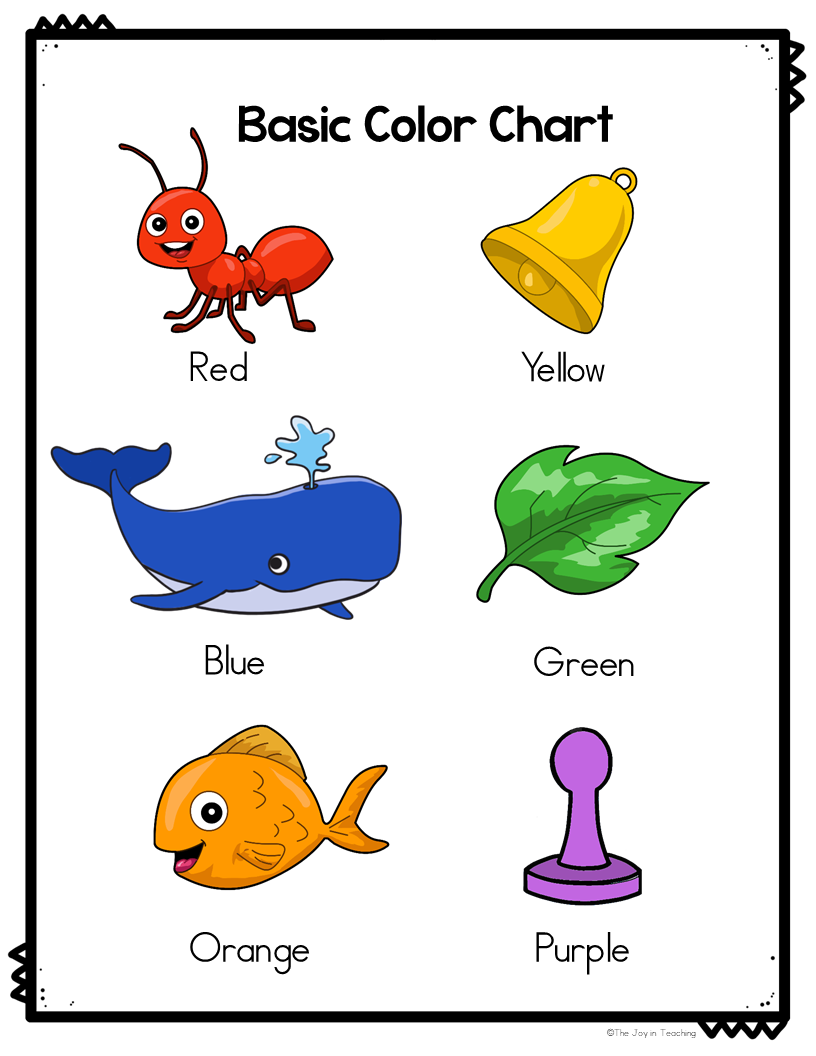
- Color Songs: Use catchy tunes to help children remember color names.
- Color Mixing: Combine paints or colored water to create secondary colors like green, orange, and violet.

- Color Songs: Use catchy tunes to help children remember color names.
- Coloring
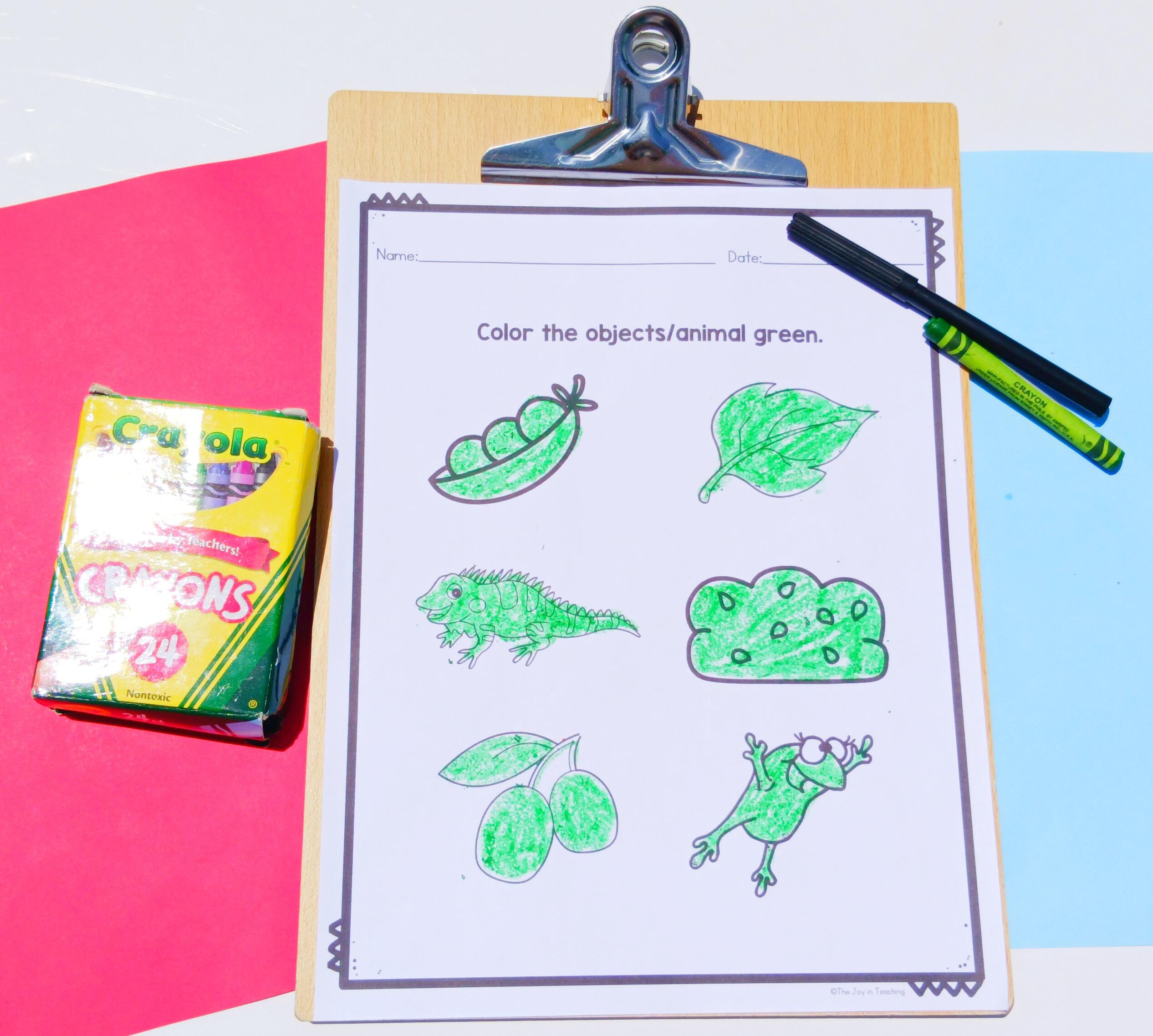
- Identification

Step 2: Explore Basic Shapes
Begin with simple 2D shapes like circles, squares, triangles, and rectangles.
Activities:
- Shape Chart
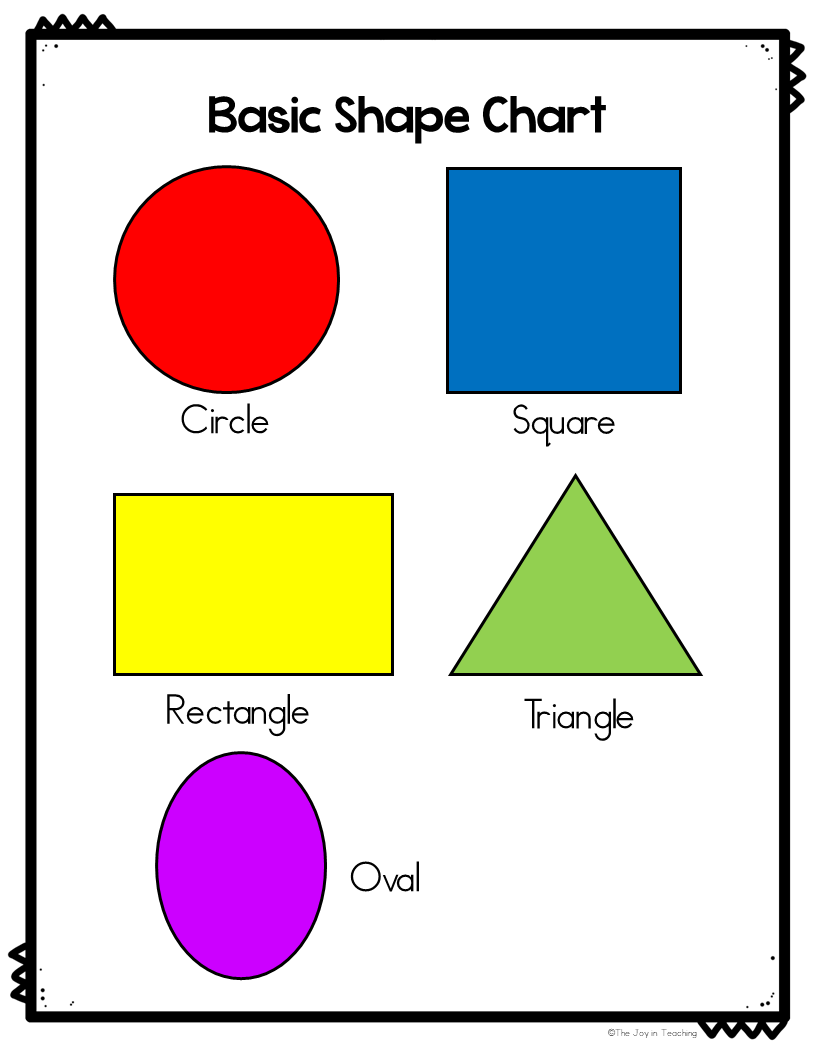
- Shape Sorting
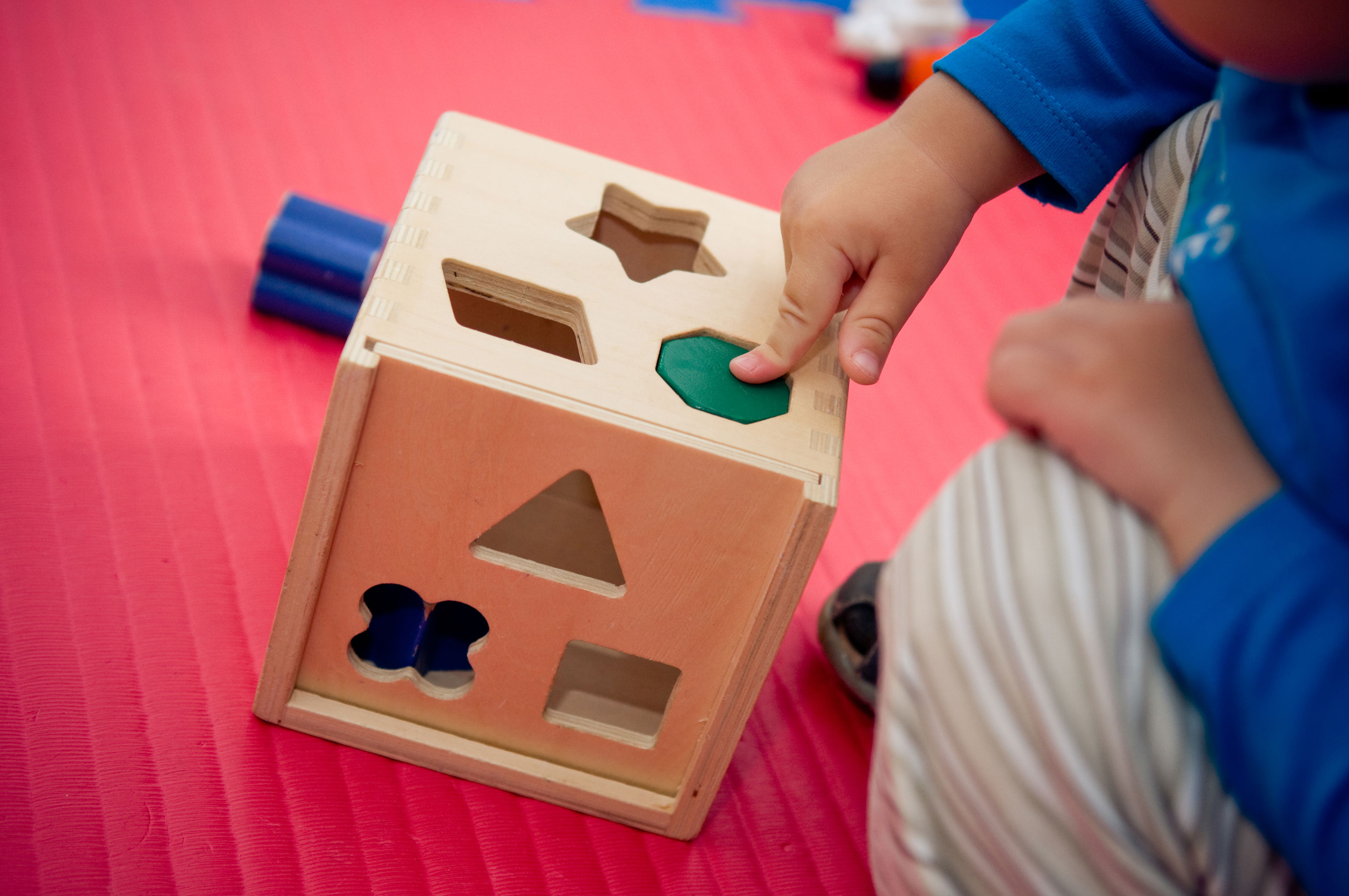
- Shape Walk: Go for a walk and look for everyday objects in familiar shapes.

- Shape Art: Make animals, buildings, or characters using various shapes.

- Coloring Shapes
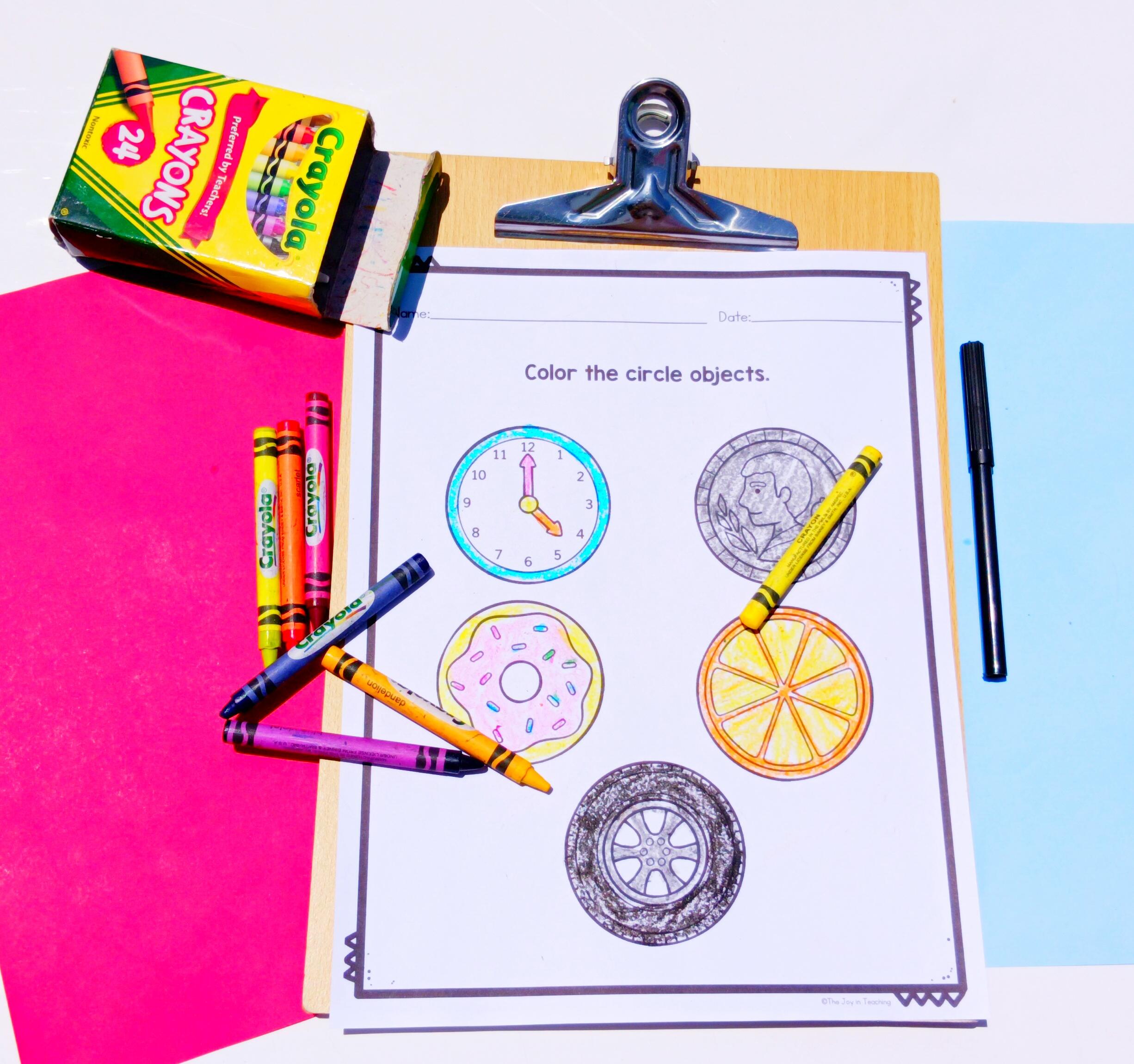
- Identifying Shapes
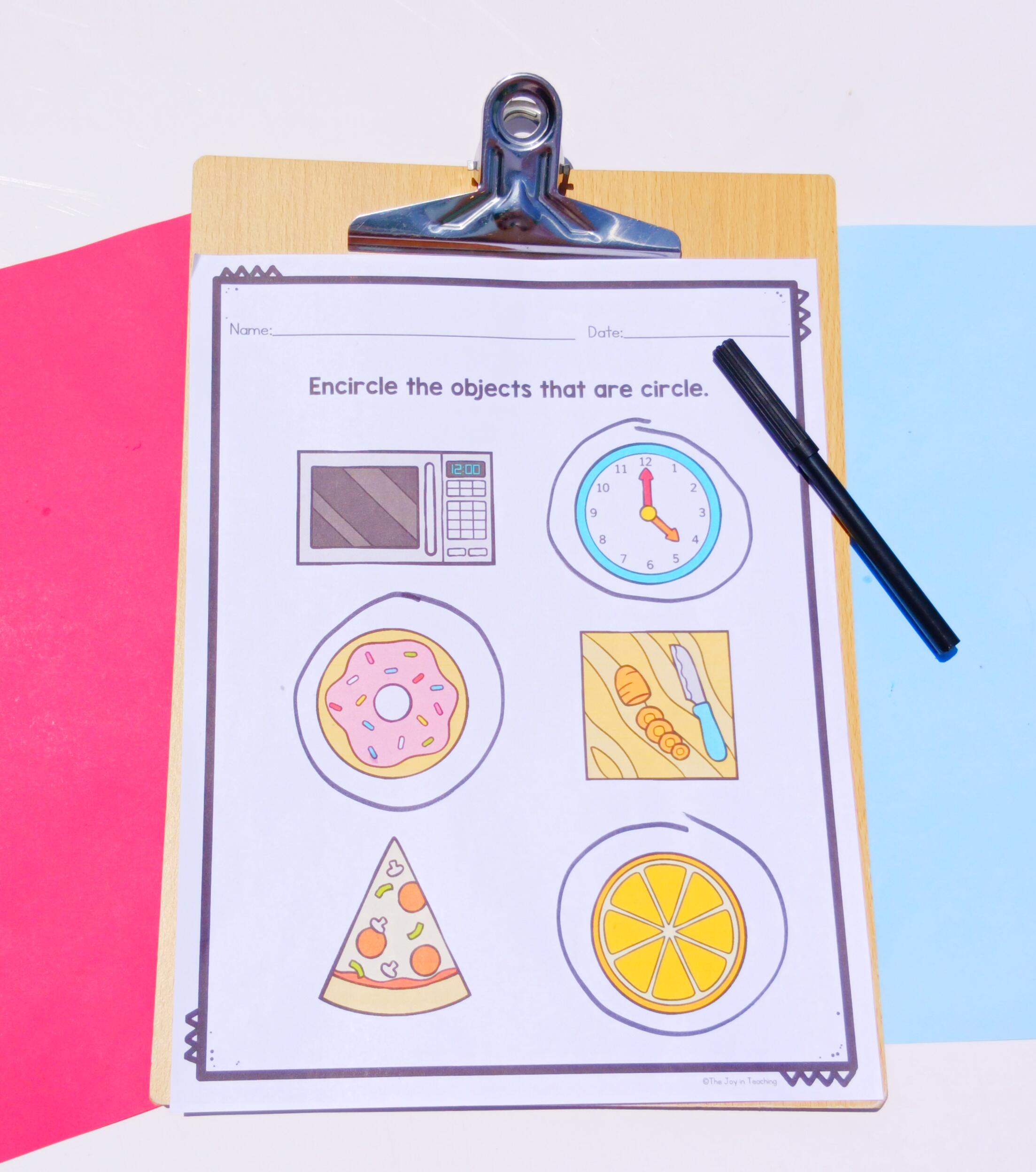
- Drawing Shapes

- Shapes Cut and Paste
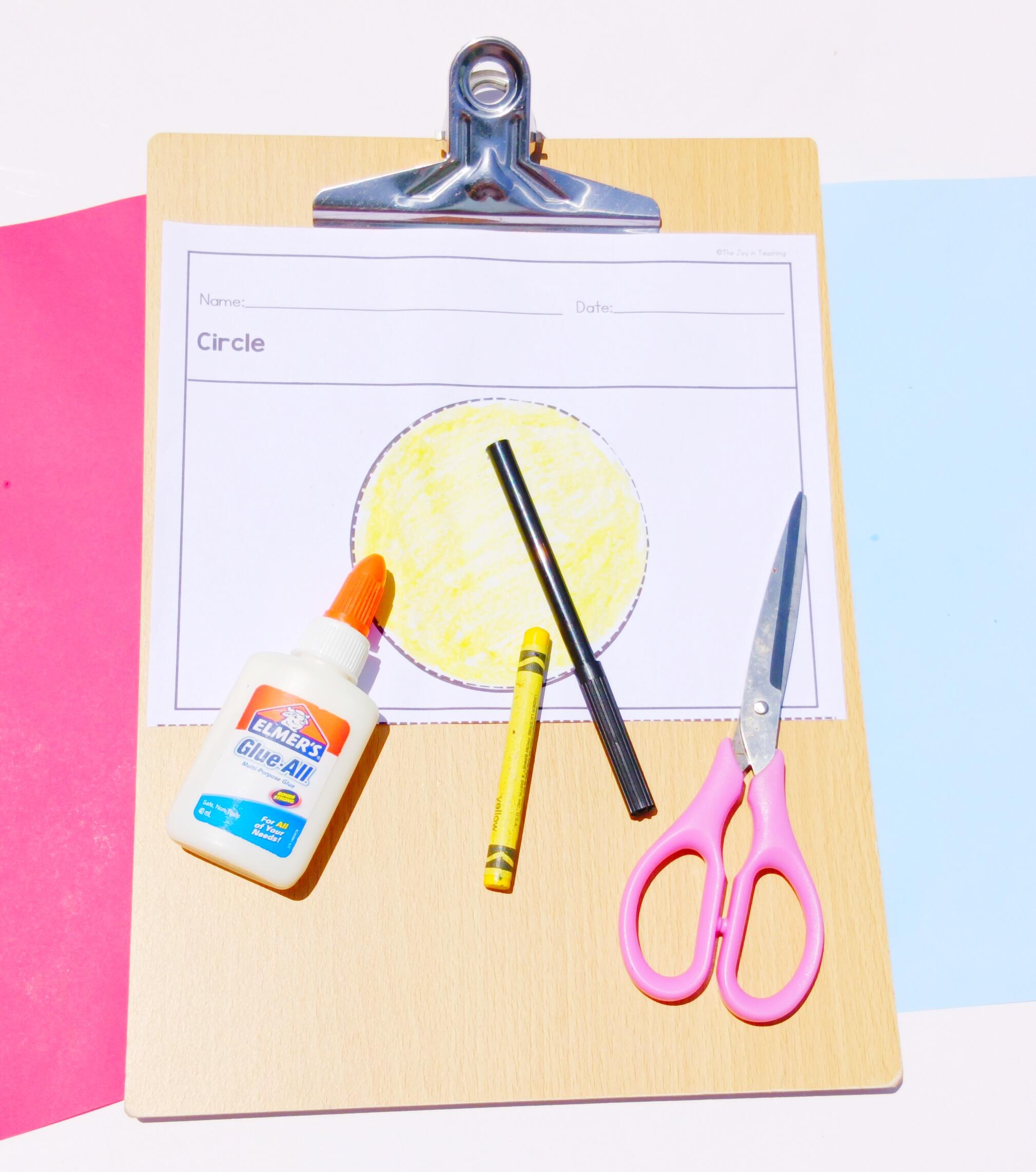
Step 3: Combine Colors and Shapes
Once children are confident in both areas, start combining them in activities.
Activities:
- Color & Shape Match
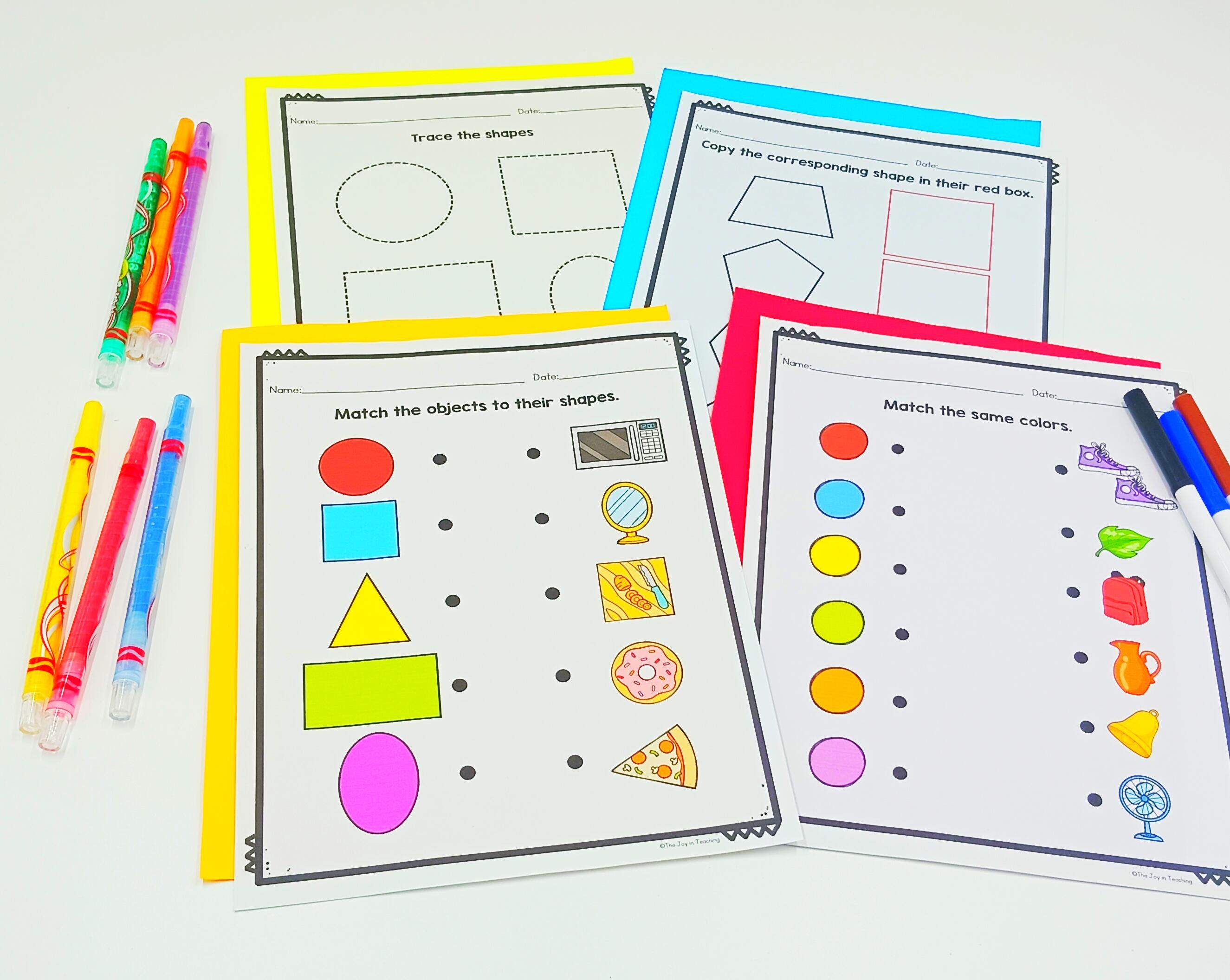
- Shape Collages: Using colored paper, let children create collages with different colored shapes.
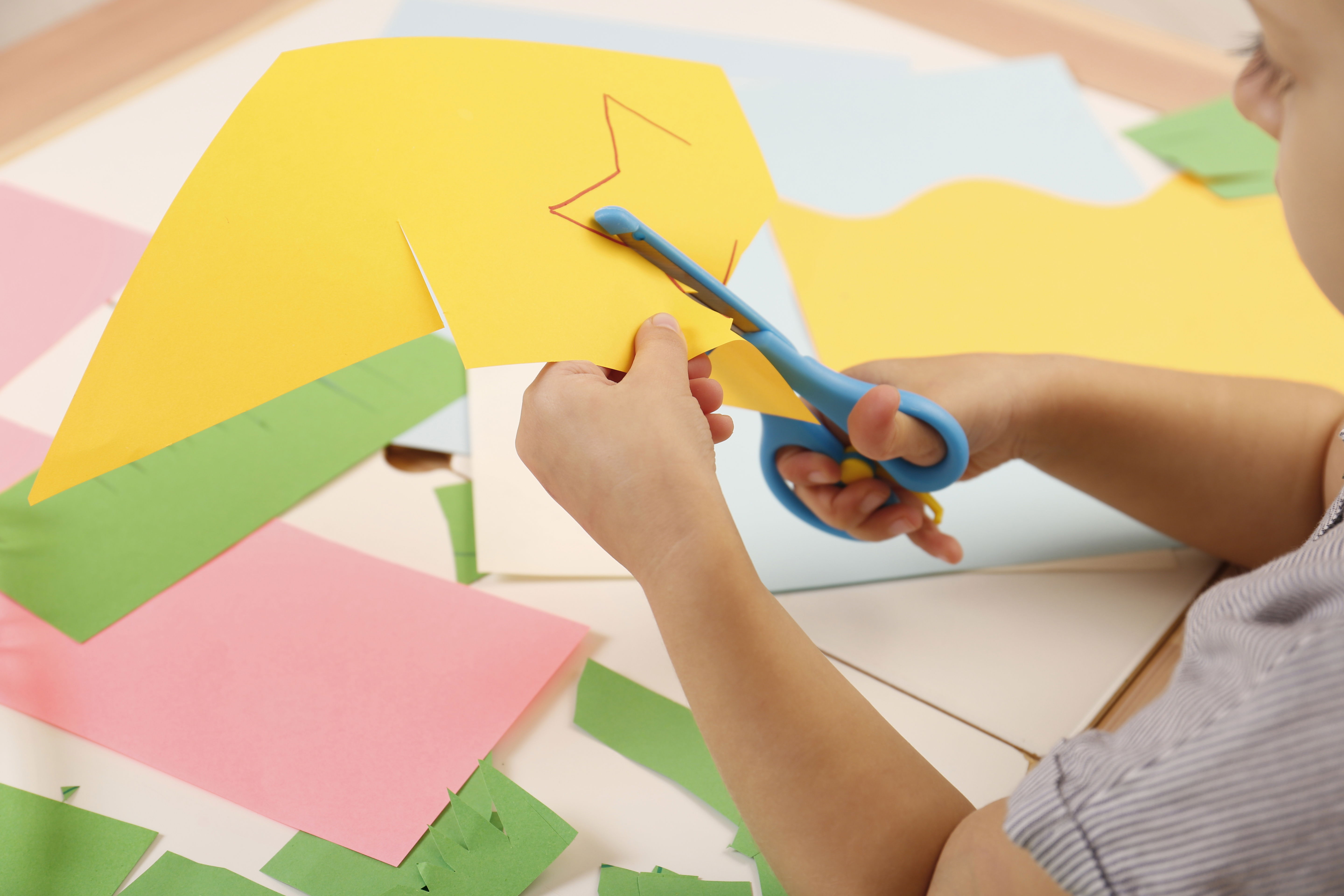
- Simon Says: Add shape and color instructions like “Find something green and square.”

Making Learning Fun: Tips and Tricks
1. Use Visual Aids
Colorful posters and charts help make abstract concepts more concrete.
2. Incorporate Play
Toys, puzzles, and games that involve sorting or matching colors and shapes are perfect learning tools.
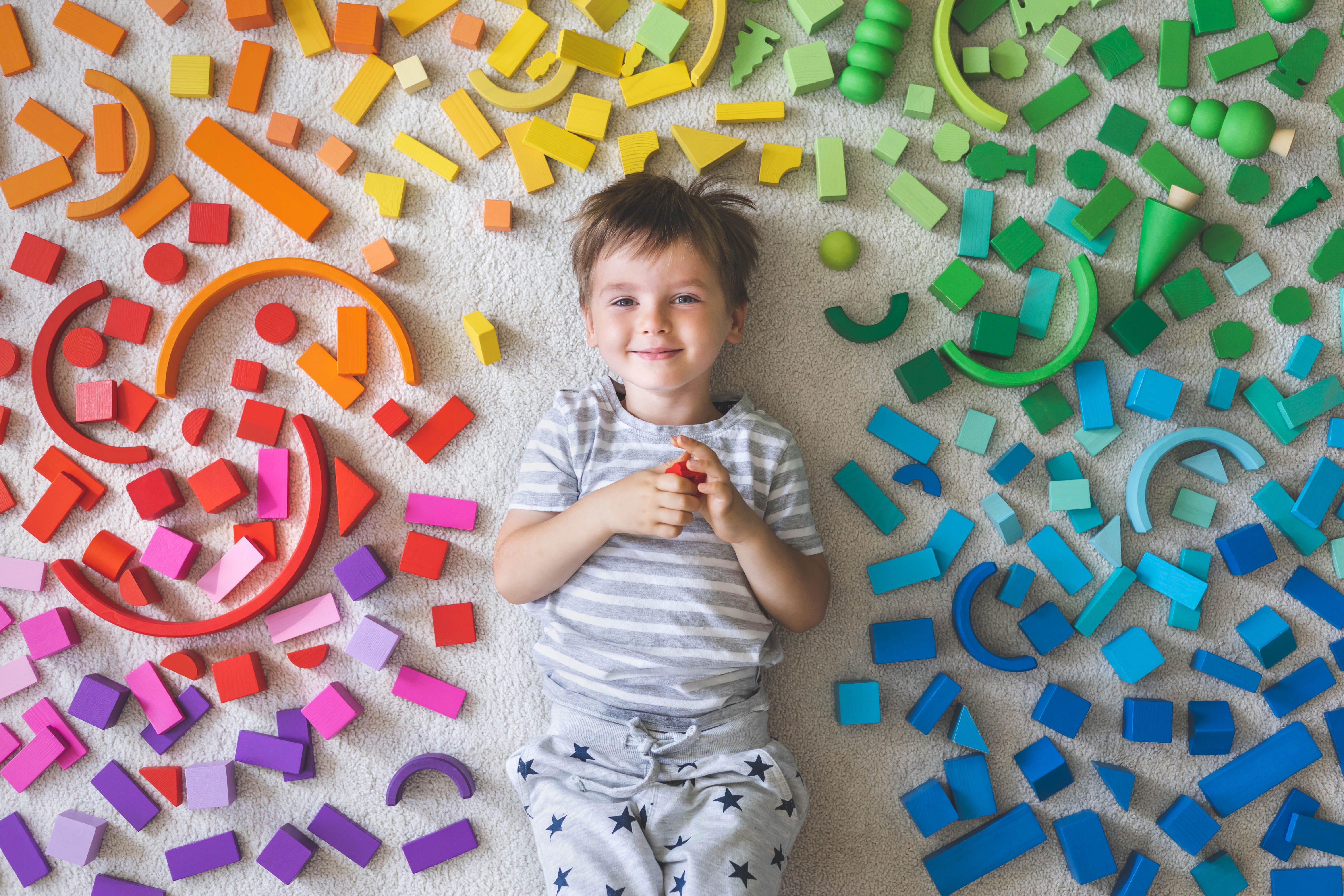
3. Interactive Story Time
Read books that highlight shapes and colors, and pause to ask questions or point out examples.

4. Art & Craft Projects
Let kids draw or cut out shapes, paint with different colors, or make their own “shape books.”

6. Engaging Classroom Themes
Have color days or shape days where everything—outfits, snacks, and activities—aligns with the theme.
Activities You Can Include in a Weekly Routine
- Color and Shape Bingo: Great for group learning.
- Shape Scavenger Hunt: Encourages observation skills.
- Painting with Shape Sponges: Mixes sensory play with recognition.
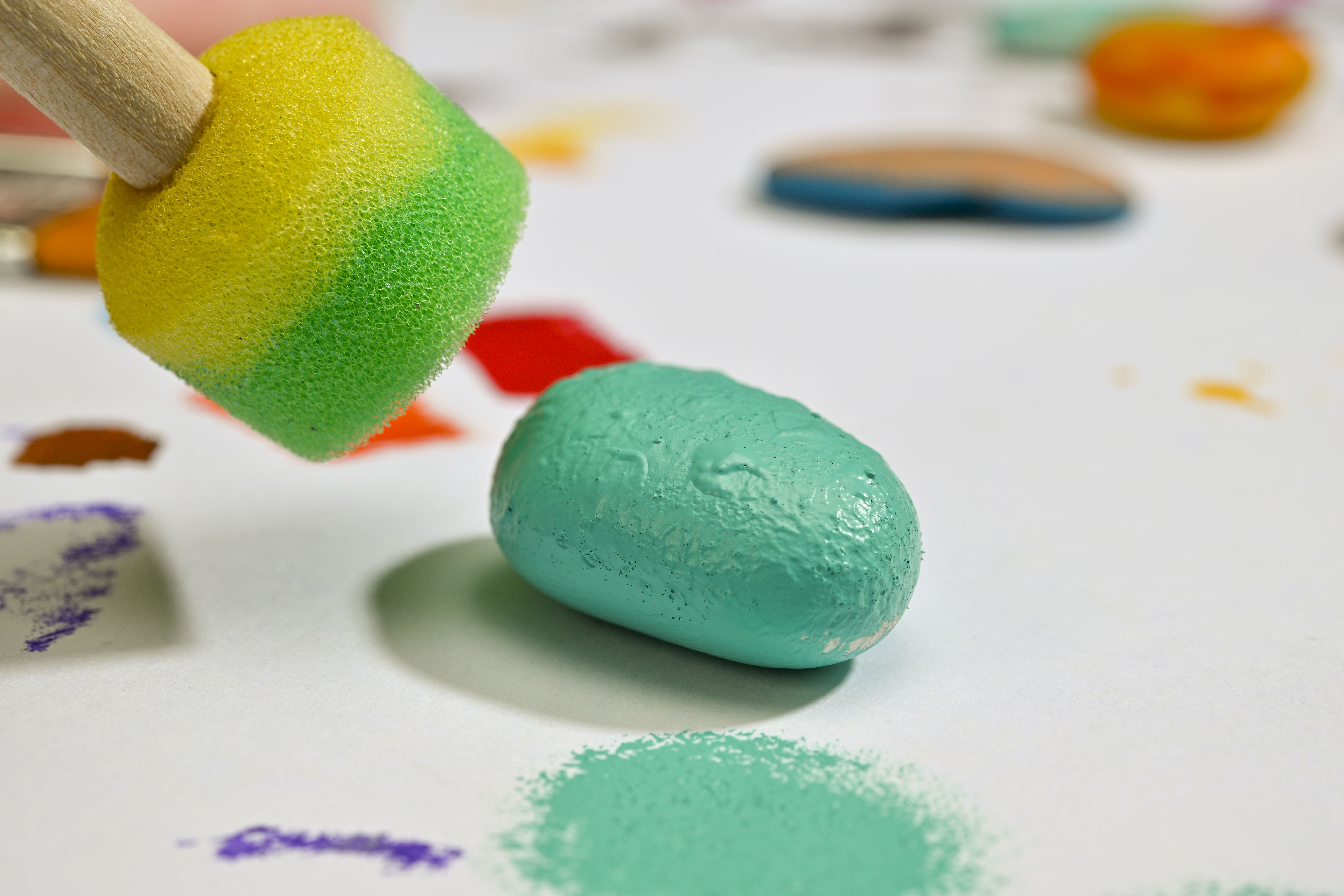
- Color Blocks or Toys
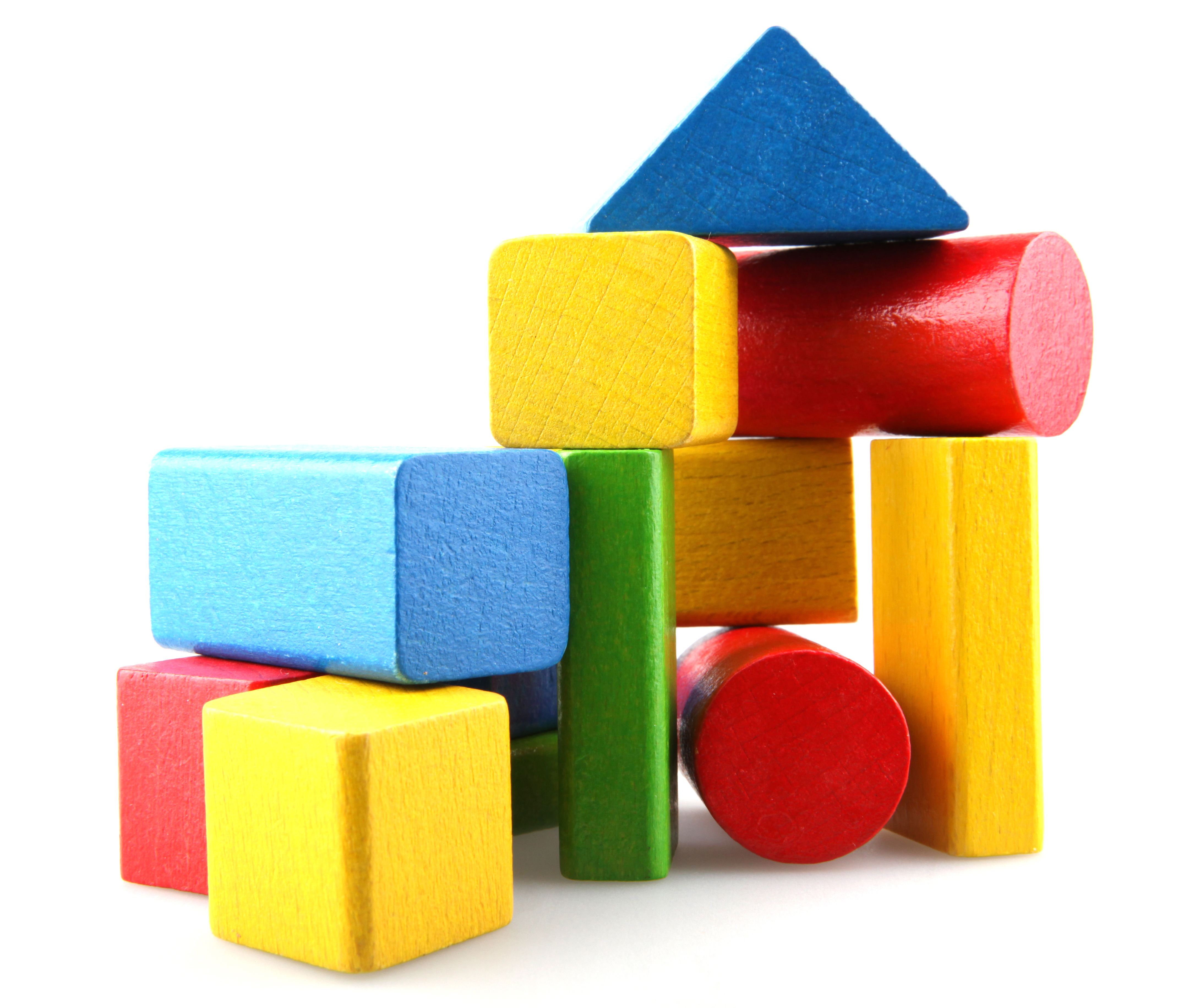
- Shape Puzzles for Fine Motor Practice
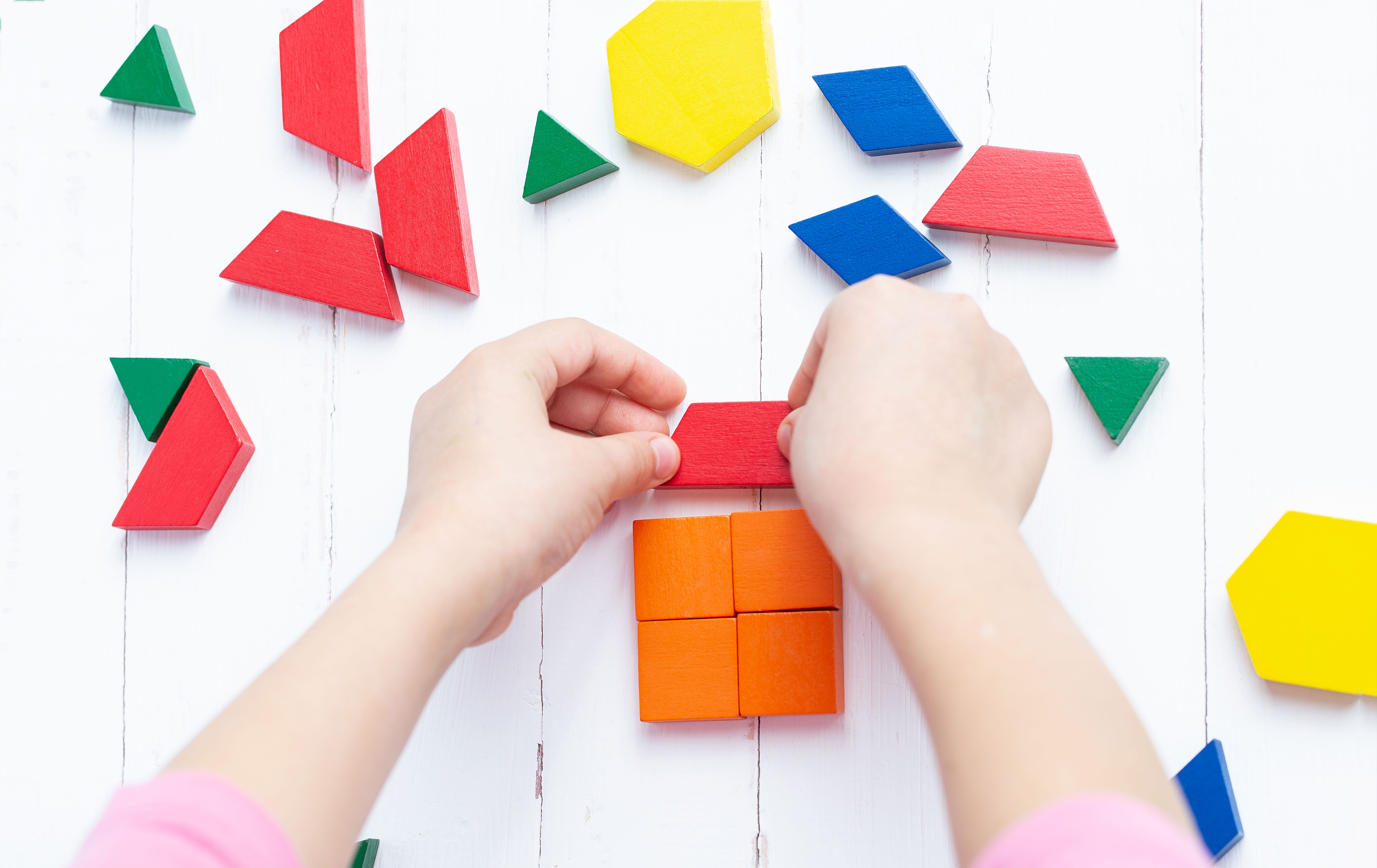
- Color Mixing Experiments: Use water or food coloring for visual impact.
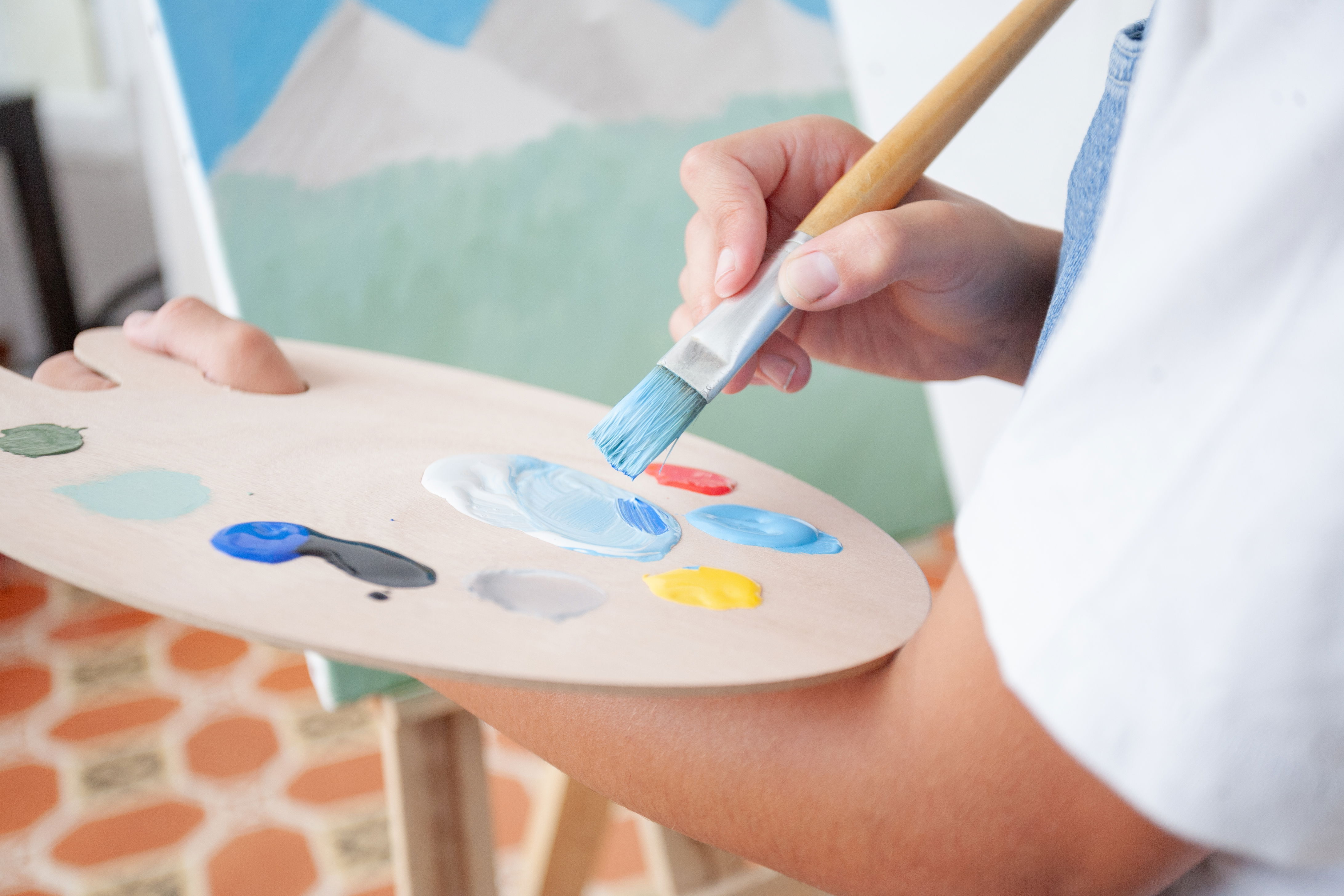
Tips for Parents at Home
- Incorporate Learning into Everyday Moments
Ask questions like “What color is your cup?” or “Can you find a square in the room?” - Create a Stimulating Environment
Use colorful items and wall charts. - Use What You Have
Sort clothes by color, identify shape-based foods (like round apples or rectangular crackers). - Explore Educational Apps
Look for kid-friendly apps that reinforce these skills in interactive ways. - Be Consistent
Revisit colors and shapes regularly through a variety of play-based activities. - Celebrate Progress
Use positive reinforcement like stickers, high-fives, or a “color and shape” badge.
Looking for Ready-to-Use Activities?
If you’re looking for structured, hands-on options to reinforce these skills, this Pre-K Basic Colors and Shapes is packed with activities that can be printed and used at home or in the classroom. This 78-page collection includes:
- Color Posters & Worksheets for red, yellow, blue, green, orange, and violet.
- Color Mixing Activities that show how to create new colors from primaries.
- Shape Posters & Practice Pages for circles, squares, triangles, rectangles, ovals, diamonds, trapezoids, pentagons, hexagons, and octagons.
- Tracing and Drawing Pages that help build fine motor control while reinforcing shape recognition.
- Matching Activities that challenge children to match colors and shapes with real-world items or other representations.
- Cut-and-Paste Crafts using basic shapes and colors—perfect for hands-on learners.
These activities can be printed, laminated for reuse, or added to a morning work routine or learning center.
Teaching colors and shapes doesn’t need to be complex. With consistency, creativity, and just the right mix of play and structure, children will build strong foundational skills while having fun along the way.
Related Resources:
1. Pre-K Letter of the Week- 15 pages activity per letter
2. Numbers 1-10 Worksheet- color, cut & paste, recognition, counting, assessment
3.Pre-K Beginning Sounds Worksheet- this can also be used as a task card
4. Fine Motor Skills Activity- craft activity, glue activity, cut & paste, cutting activity, writing activity
5. Basic Colors and Shapes Worksheet
For Center Activities
7. Numbers 1-10 Popsicle Task Cards
8. Numbers 1-10 Hand Counting Flashcards
9. Free Number Dice 1-6 Flashcards
Follow Me for More Teaching Tips with Joy For more tips, resources, and a daily dose of teaching joy, follow me on:
Got questions or want to share your success stories? Drop me an email at thejoyinteaching@gmail.com. I love hearing from fellow educators and parents! Happy Teaching!
Joy Medalla
The Joy in Teaching 💛